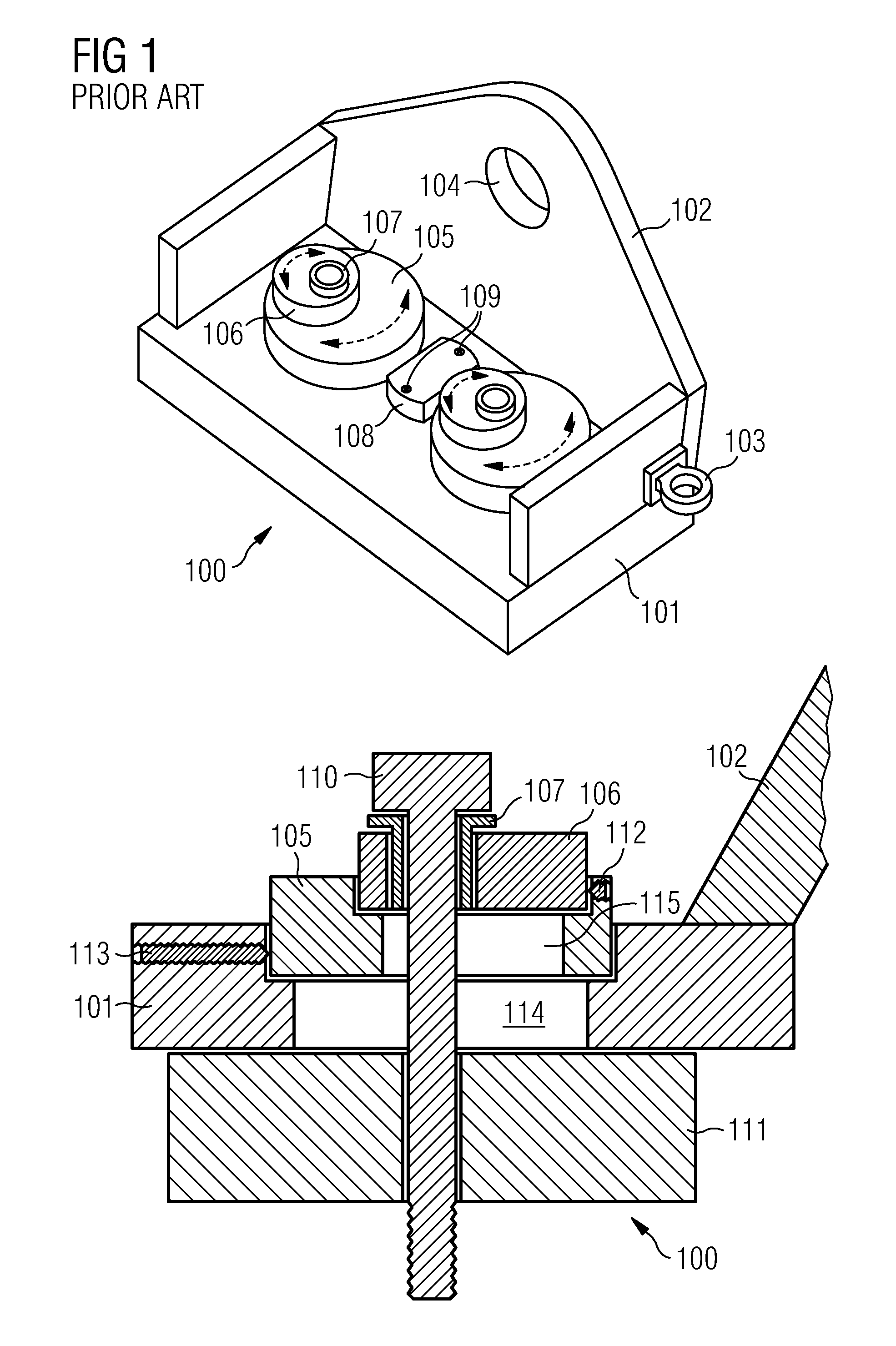Lifting fitting
- Summary
- Abstract
- Description
- Claims
- Application Information
AI Technical Summary
Benefits of technology
Problems solved by technology
Method used
Image
Examples
first embodiment
[0041]FIG. 2 shows a lifting fitting 10 according to the invention. This lifting fitting 10 comprises a base plate 17 and a side wall 15 with a connecting means 14 in the form of an opening 14 or eyelet 14 for connection to a shackle and lifting apparatus. A pair of smaller eyelets 16 located at either end of the side wall 15 is used in handling the fitting 10 during connection to a part to be lifted.
[0042]The lifting fitting 10 according to the invention is shown to have a first slotted hole 11 and two further slotted holes 12, 13 facing away from the first slotted hole 11. This arrangement allows degrees of freedom in essentially two directions for bolts inserted through these slotted holes 11, 12, 13.
[0043]This is illustrated with the aid of the following figures. In FIG. 3, the lifting fitting 10 is shown connected to an assembly means 31 or flange 31 of a circular tower section. For the sake of simplicity, only the flange 31 is shown. A series of holes 310 is arranged around th...
third embodiment
[0048]FIG. 9 shows the lifting fitting 30 according to the invention. Here, the lifting fitting 30 has two central slotted holes 11, and this pair of central slotted holes 11 is flanked on both sides by a pair of outer slotted holes 12, 13. This arrangement of slotted holes 11, 12, 13 may allow a greater range of differences in the sizes of the elements to be lifted by the lifting fitting 30, or may allow the lifting fitting 30 to be used with elements having assembly means with widely varying or even irregular hole spacings.
[0049]Although the present invention has been disclosed in the form of preferred embodiments and variations thereon, it will be understood that numerous additional modifications and variations could be made thereto without departing from the scope of the invention. While the assembly of wind turbine towers made of steel tower sections was used as a basis for the description, the lifting fitting according to the invention may be used to good effect in assembling ...
PUM
 Login to View More
Login to View More Abstract
Description
Claims
Application Information
 Login to View More
Login to View More - R&D
- Intellectual Property
- Life Sciences
- Materials
- Tech Scout
- Unparalleled Data Quality
- Higher Quality Content
- 60% Fewer Hallucinations
Browse by: Latest US Patents, China's latest patents, Technical Efficacy Thesaurus, Application Domain, Technology Topic, Popular Technical Reports.
© 2025 PatSnap. All rights reserved.Legal|Privacy policy|Modern Slavery Act Transparency Statement|Sitemap|About US| Contact US: help@patsnap.com



